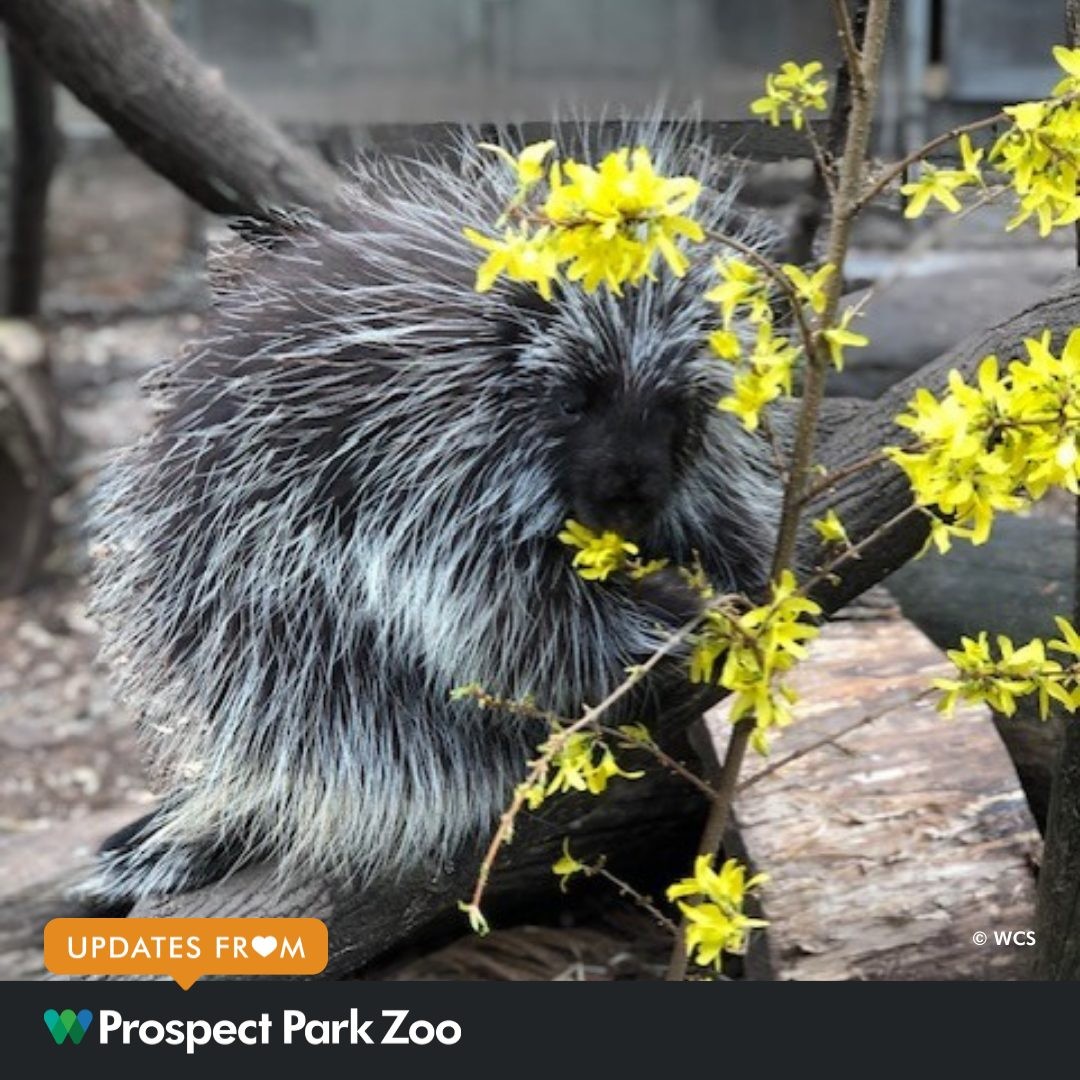– The Anatomy and Habits of North American Porcupines and their Diet Preferences
– The Role of Forsythia in Early Spring Diets for Herbivores and its Significance to Wildlife
– Enrichment Practices in Zoos, Including Dietary Enrichment for Animal Wellbeing
– The Importance of Public Education and Wildlife Conservation Efforts in Zoological Settings
– The Fusion of Modern Zoo Management and Environmental Stewardship for Species Preservation
Springtime brings a flurry of activity to the natural world as flora and fauna awaken from the sleepy chill of winter. Forsythia, with its vibrant yellow blossoms, heralds the advent of these warmer months, providing a feast for human eyes and the browsing appetites of various herbivores. Among them are the North American porcupines, creatures of quills and appetite, who find in these blooms a nutritious supplement to their diet in the formative weeks of spring.
Forsythia is not merely a feast for the senses but also a crucial component in the diet of many early spring herbivores. As repositories of plant sugars, minerals, and other nutrients, these bright yellow blooms offer sustenance to creatures emerging from the nutritional lack of winter. In zoological settings, offering forsythia browse to animals such as porcupines aligns closely with their natural feeding behaviors and dietary needs.
The North American porcupine, Erethizon dorsatum, is a rodent known for its distinct quills – an assemblage of sharp bristles that serve as a formidable defense mechanism. They sport a coat that may vary in color, from dark brown to a lighter hue, allowing a certain individuality among these spiked mammals, as seen in the distinctive colorations of Needles and Spike, both residents at the zoo. The dietary proclivities of these porcupines skew towards a herbivorous regime, encompassing leaves, twigs, and the cambium layer found beneath the bark of trees. Come spring; they eagerly adapt their palates to encompass the newly available forsythia.
In the context of zoological management, animal care teams prioritize dietary diversity for their charges. Forsythia offers a seasonal variation that aligns with the porcupine’s natural feeding rhythms. Implementing such seasonal offerings ensures that animals receive a diet mirroring their wild counterparts and contributes to their overall health and welfare. This practice, known as dietary enrichment, is a cornerstone of modern wildlife management.
The act of dietary enrichment is pivotal in a zoo setting, stimulating the animals mentally and physically. By introducing new textures, tastes, and food forages that animals encounter in the wild, caretakers inspire species-appropriate behaviors and promote a higher quality of life within the zoo environment. Forsythia’s inclusion in the diet of porcupines serves this exact purpose: enriching their daily activities and providing an engaging dietary supplement.
These enrichment practices further the goals of public education and wildlife conservation. Visitors witnessing Needles and Spike savoring their bright springtime treats garner a visceral connection to the animals’ natural world. It becomes an instrumental educational moment that can inspire a deeper appreciation and understanding of wildlife conservation issues. Zoos regularly use these encounters as platforms to disseminate conservation messages, connecting the dots between animal welfare, habitat protection, and biodiversity.
Public education is critical in the context of wildlife conservation, particularly as it pertains to species such as the North American porcupine. By enlightening visitors about the porcupine’s woodland habitat, dietary habits, and challenges, zoos foster a sense of stewardship beyond the institution’s gates. Understanding that forsythia, a common garden shrub, can play a role in the lives of these creatures offers a relatable touchpoint for zoo-goers, who may be encouraged to participate in conservation efforts.
Zoo management today is an intricate interplay between animal care, public education, and environmental stewardship. The well-being of animals like Needles and Spike relies on a harmonious blend of scientific understanding, environmental enrichment, and compassionate caregiving. This multifaceted approach ensures the porcupines thrive, not just survive, while in human care, fostering an atmosphere where the physical, psychological, and natural needs of each animal are met.
Furthermore, modern zoos have become critical bastions for education on environmental conservation – a role that extends to raising awareness about preserving species like the North American porcupine. Through initiatives such as breeding programs, habitat restoration efforts, and public engagement, zoos act as catalysts for change in the wider conservation landscape.
Watching Needles and Spike as they leisurely consume the fresh forsythia provided to them is more than just a charming spectacle for zoo visitors; it is a testament to the meticulous care and progressive stewardship practices embedded in contemporary zoological institutions. It reflects a profound respect for the individual needs of each resident species and underscores the zoo’s role as an educational and conservation-oriented entity.
Zoos engage with the public through platforms like social media, as seen in the reel created by Assistant Supervisor Veronica. They share these moments of animal joy and natural beauty, contributing to a broader awareness of wildlife and the importance of preserving natural habitats. Her footage, replete with the sounds of contented porcupines munching, transports viewers right alongside these quilled browsers, creating an immersive experience that educates while it entertains.
Through such initiatives, zoos educate, captivate, and, most importantly, incite action. By fostering an understanding of and connection to wildlife, these institutions play an indispensable role in safeguarding the future of species like Needles and Spike and the beauty of phenomena like the bloom of forsythia bushes. Importantly, they underscore the synergistic relationship between human actions, wildlife conservation, and the enduring rhythms of nature. As spring returns each year with its promise and bounty, so does our opportunity to contribute positively to the natural world and its fascinating inhabitants.
*****
Source Description
Tis the season for forsythia! Watch as our North American porcupines, Needles (darker quills) and Spike (lighter quills), enjoy some brightly-colored browse during these early moments of spring at the zoo.
Sound on for porcupine–ASMR!
🎥: Asst. Supervisor Veronica

